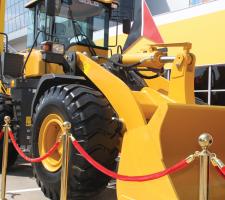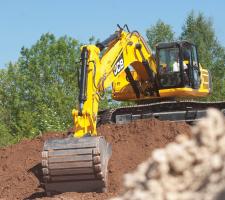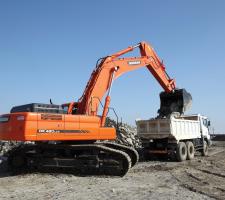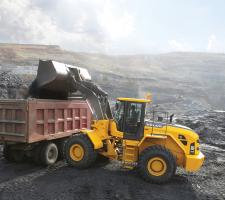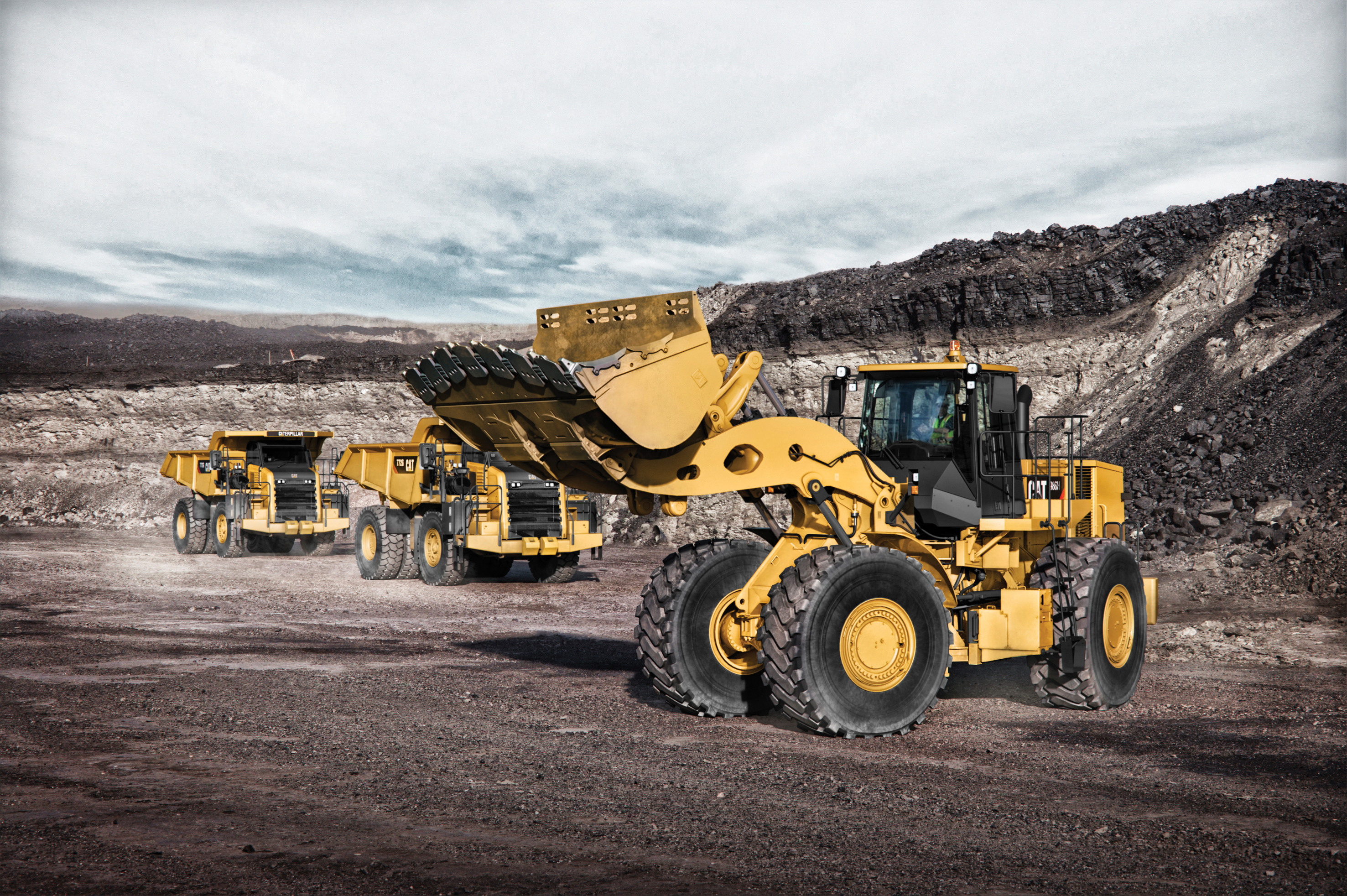
This year has seen the introduction of a host of new and improved wheeled loaders and crawler excavators from many manufacturers as Dan Gilkes reports.
The majority of these updates have been driven by emissions legislation changes within Europe and North America.
For less regulated markets such as the Middle East, Russia, Africa, India and China, where machines are currently running at Tier 2, Tier 3 emissions, or in some cases in effect untiered levels, it might appear that there is little of interest in these updates. That is not the case however. Increasingly, manufacturers are no longer simply building older models for lower tiered countries, as customers in all markets are looking the same advances in efficiency and productivity. Manufacturers are therefore providing much the same machinery where possible, simply with a different specification engine.
The good news for buyers in these territories is that in many cases, while the engine emissions have certainly been the focus of much of the development work, manufacturers are also driving down fuel economy and a reduction in operating costs to counter the additional expense of the engine technology.
For customers in lower tier countries much of the equipment coming to market therefore benefits from advanced hydraulic technology, and in some cases engine installation improvements that don’t rely on low sulphur fuels and expensive engine oils. Operators are also benefitting from improved cab environments, lower noise levels and increased hydraulic controllability, boosting their productivity and reducing ownership expense.
As well as using this highly efficient engine, the machines benefit from an improved cab environment, new monitors and control systems and the possibility of greater interaction with the firm’s LiveLink telematic system. While Tier 2 markets won’t be getting the Ecomax engine for some years, they are still set to benefit from most of the cab improvements, with upgraded interiors and the possibility of fuel savings from higher specification hydraulics and more efficient cooling systems also on the cards.
Move up the weight range and JCB has just upgraded its 33tonne JS330 and 36tonne JS360 crawler excavators too. In Tier 4 Interim markets this machine continues to use a Japanese
With ratings of 140kW (188hp), 165kW (221hp), 190kW (255hp) and 225kw (302hp) the six-cylinder Dieselmax 672 engine delivers an impressive maximum torque figure of 1,200Nm. It is also claimed to use up to 8% less fuel than the previous engine in the JS machines.
That said, the company has also recently introduced a 21 tonne model specifically for the Indian, African and Asian markets, the JS205. Built at the firm’s Indian manufacturing plant, the JS205 is powered by a non-tier
The JS205 uses what JCB claims is an all-new global boom and dipper design, with deeper, stronger steelwork. For the first time this boom is built in exactly the same way in India as in JCB’s main factories in the UK, using the same robot welding technology and manufacturing rigs.
It’s a similar story at
Both of the machines are powered by Doosan’s own six-cylinder Tier 2 diesel engine, developing 238kW (318hp). The machines benefit from new travel motors that deliver up to 37.6tonnes of tractive effort. Bucket and dipper breakout forces have also been increased, thanks to a significant increase in hydraulic flow from the two revised 360litre/min pumps. These are improvements that are being seen by customers in both highly regulated Tier 4 Interim countries and in lesser regulated Tier 2 markets.
The excavators take on the LCD colour display monitors already seen in Tier 4 machines, offering Power, Standard and Economy working modes. Doosan says that it has incorporated latest generation hydraulic components to provide optimal separation of the hydraulic flow to the track motors and to the digging equipment too, ensuring easy multi-function use and greater control for the operator.
There is also an EPOS electronic control system that adjusts both engine and hydraulic outputs to boost productivity and maximise economy. That said, Doosan claims that it has kept complex electronics to a minimum on the machines, to make easy work of diagnostics and repairs in the field.
This transfer of technology is not only happening in the crawler excavator market, many of the latest wheeled loaders are also benefitting from increased productivity and performance, regardless of the improved efficiency provided by Tier 4 engines.
Volvo itself has been focussing on improvements in its own equipment performance for less regulated countries. The L105 wheeled loader, built primarily for the Chinese market, weighs in at 16-18tonnes and is powered by a 167kW (224hp) D7D engine.
This engine provides high torque at low engine rpm, improving fuel consumption. It also comes with Volvo’s eco pedal, a feature first seen on European loaders that physically pushes back against the operator’s foot to encourage part-throttle use.
The L105 uses twin gear pumps to permit high hydraulic pressures for faster lifting and increased bucket breakout forces. In addition the machine’s Automatic Power Shift (APS) transmission allows the operator to choose between four gear-shifting programmes, to match the machine to the application and further reduce fuel consumption.
As with the Caterpillar loaders, the Volvo benefits from cab technology seen first in Tier 4 countries, with Contronic electronic diagnostic and monitoring systems that alert the driver to any problem with the machine, ensuring timely service and maintenance and reducing downtime.
Volvo is also expanding its D series crawler excavator offering to China and other Asian markets. The company claims that the new models offer a 10% efficiency gain, despite being 5% more powerful than previous excavators. The improved hydraulic system also results in 5% faster digging times.
Again though, customers don’t just benefit from advances under the engine canopy. In the cab all D series models have a new full colour LCD screen that delivers more information on machine operating performance, helping operators to increase efficiency and reduce maintenance downtime.
At
Hyundai is instead looking to hydraulic hybrid technology. Through its Hi-POSS (Hyundai intelligent power optimal sharing and energy saving) system, the slew brake energy is stored in a hydraulic accumulator, and then released to assist the engine when the operator demands hydraulic power.
The company says that it is already seeing fuel efficiency savings of up to 20% when using the system on a 22tonne machine.
It will be some time before we see this sort of technology in less regulated territories, but it clearly demonstrates that equipment manufacturers are taking a holistic approach to machine design, looking closely at every component to see where efficiencies can be increased and economies improved. Whatever engine exhaust legislation you are working to, few would argue with increased productivity and reduced running costs.
For many years lower emission countries have to some extent been the poor cousins of Europe, the USA and Japan. However as customer demand has increased, and manufacturer development has moved on, simply selling older models in these countries is no longer enough. Going forwards, manufacturers are going to have to concentrate equally hard on improving equipment for buyers across all markets, and nowhere can that be more clearly seen than in the loading and excavating market.


